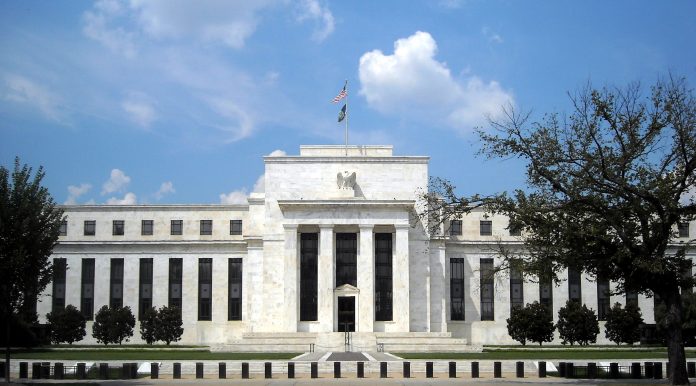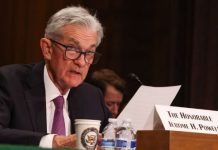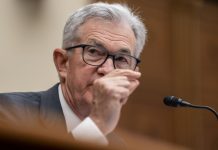March 16 (UPI) — The Federal Reserve on Sunday cut interest rates to zero in response to the COVID-19 outbreak.
The Federal Market Committee made the decision to lower the target range for the federal funds rate to 0 to 1/4 percent expecting to maintain that target range until it is “confident the economy has weathered” the impact of the coronavirus outbreak.
“The effects of the coronavirus will weigh on economic activity in the near term and pose risks to the economic outlook,” the Fed said.
The Fed also implemented quantitative easing through $500 billion of Treasurys and $200 billion of agency-backed mortgage securities purchases beginning Monday with a $40 billion installment.
President Donald Trump praised the Fed’s moves, during a briefing by the White House Coronavirus Task Force.
“That’s a big step and I’m very happy they did it,” Trump said.
This is the second move the Fed has made in response to concerns about the outbreak after it ordered an emergency half-point interest rate cut on March 3 lowering the target range to 1 to 1‑1/4 percent.
On Sunday, the Fed also lowered the primary credit rate by 150 basis points to 0.25 percent, effective Monday.
“This reduction in the primary credit rate reflects both the 100 basis point reduction in the target range for the federal funds rate and a 50 basis point narrowing in the primary credit rate relative to the top of the target range,” the Fed said.
Additionally, the Federal Reserve, the Bank of Canada, the Bank of England, the Bank of Japan, the European Central Bank and the Swiss National Bank agreed to lower the pricing on the standing U.S. dollar liquidity swap arrangements by 25 basis points.
“To increase swap lines’ effectiveness in providing term liquidity, the foreign central banks with regular U.S. dollar liquidity operations have also agreed to begin offering U.S. dollars weekly in each jurisdiction with an 84-day maturity, in addition to the 1-week maturity operations currently offered,” the Fed said.
Those changes will take effect this week and remain in effect “as long as appropriate to support the smooth functioning of U.S. dollar funding markets.”
The moves by the Fed come after a week in which an emergency provision halting trading was activated twice amid large declines to start trading due to concerns about the coronavirus and oil prices and a rally on Friday amid news of financial relief from the government.






